This post may contain affiliate links, meaning I can earn a small commission from items you purchase (at no cost to you).
Take this cilantro pesto with you to your next taco party; it is the perfect unique topping to wow on a variety of dishes. While this controversial herb might not be for everyone, give my cilantro pesto recipe a try and decide for yourself!
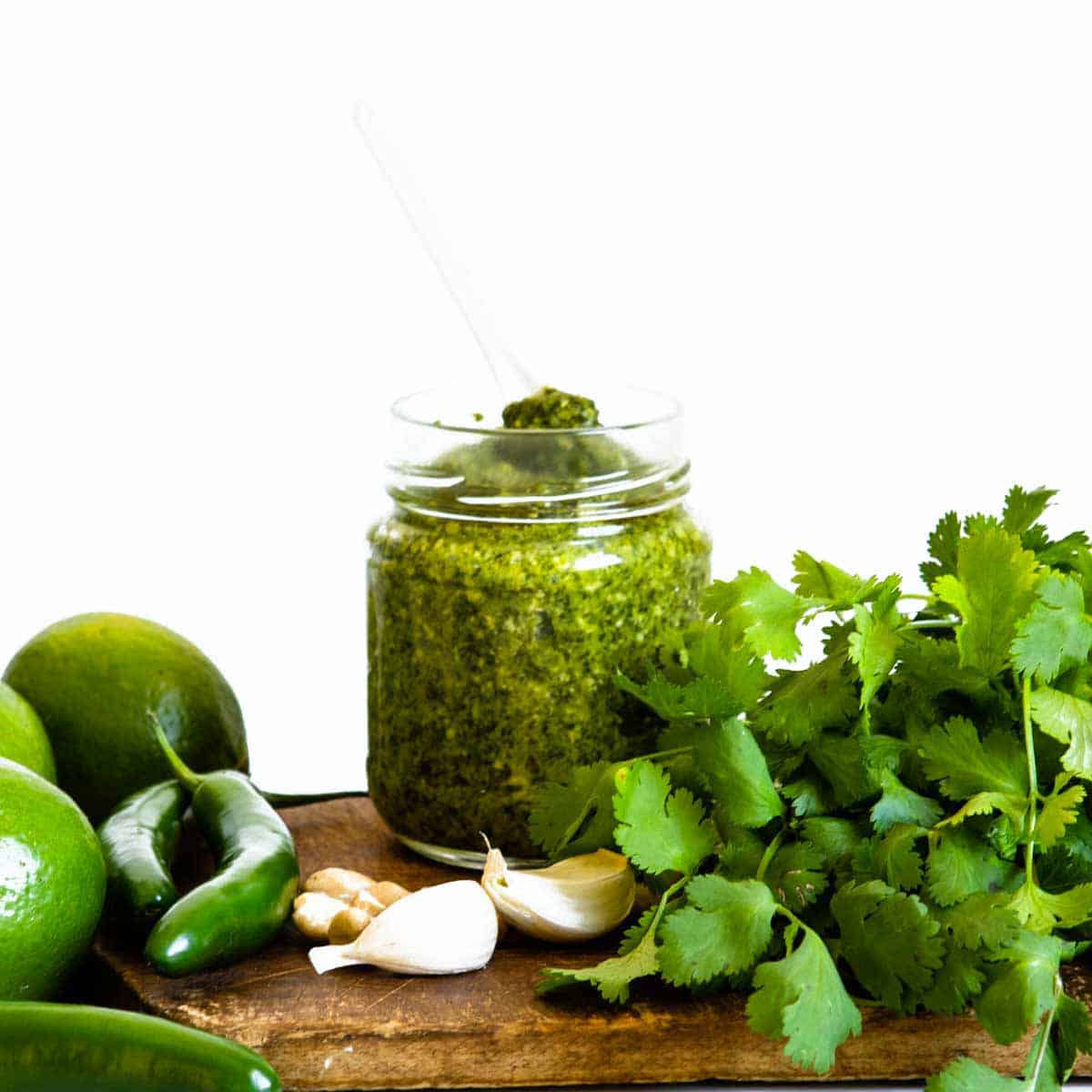
This delicious sauce can be used for a wide variety of dishes. It’s got a spicy kick, and is bursting with flavor. Don’t be afraid to use it as a sauce, dip or spread… the possibilities are endless! I’ve got all the deets on this recipe, along with my fav ways to use it, and some other pesto options for all you plant based foodies out there.
Table of Contents
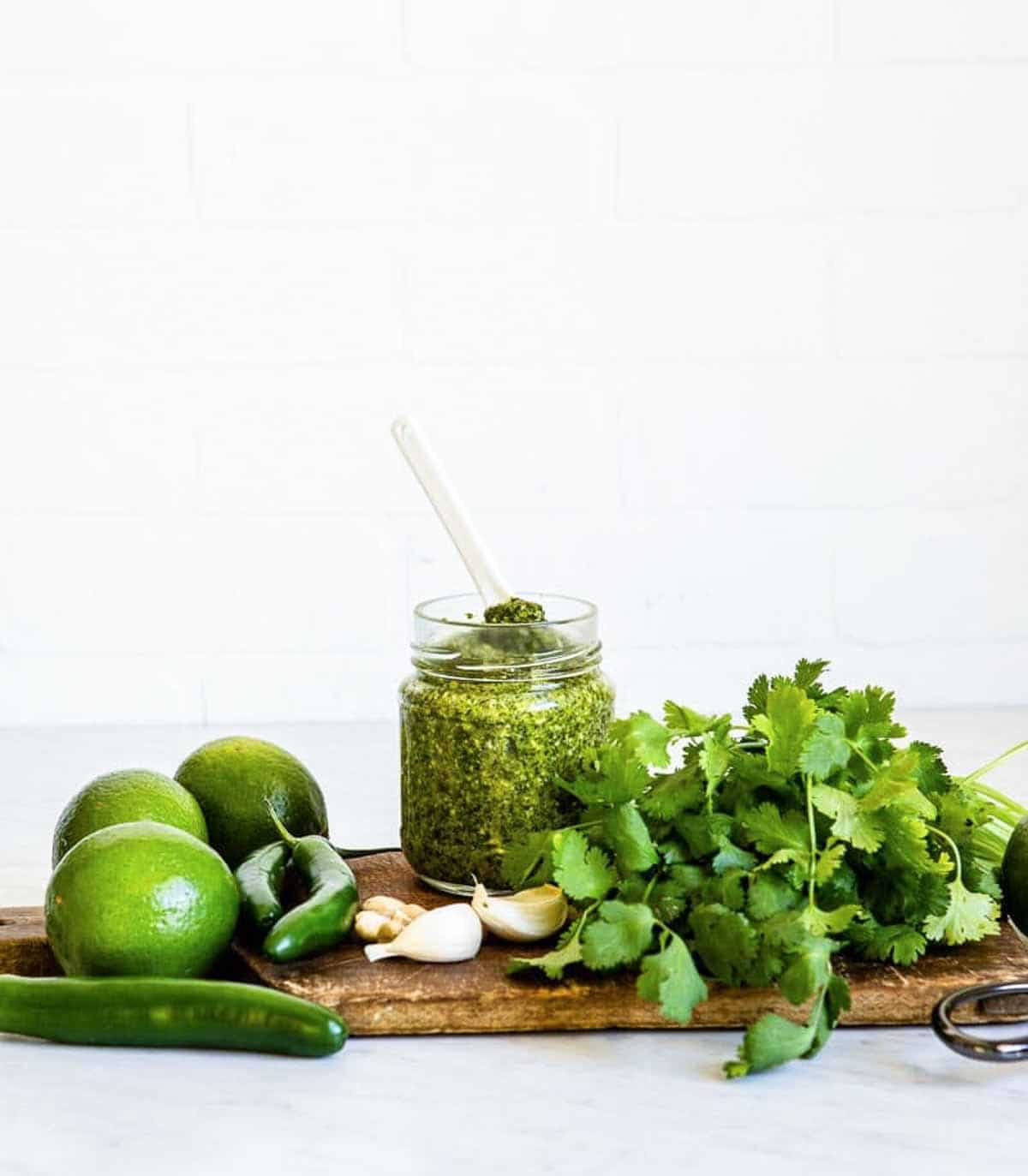
How to Make Cilantro Pesto
The ingredients for this pesto were chosen not only for their unique flavor profiles, but also because they marry so well together. In addition, the cashews add a creamy, rich component that compliments the tangy lime and spicy serrano chile.
The easiest way to make cilantro pesto is by using a food processor or blender, but you can also make it by hand using a mortar and pestle. Traditional pesto recipes use this method! Yet, a food processor or blender certainly makes cooking easier! The by-hand method produces a chunkier finished product, while an appliance will blend it a bit more smoothly.
First, chop the cashews, serrano chile, and garlic. Doing this before adding the cilantro leaves and tender stems will prevent any large chunks and yield a creamy, more uniform pesto.

Serrano chiles are a tad spicier than jalapeños. If you prefer, remove the seeds and ribs of the chile for a milder flavor. Whatever you do, though, be sure to wear gloves to protect your hands and fingers (and eyes!) from the natural oils.
Next, add the cilantro leaves and stems. Pulse until finely chopped. Add the lime zest and juice.
If you don’t have a citrus zester or microplane to remove the zest from the limes, you can use a vegetable peeler and then finely chop the zest before adding it to the processor or blender. The zest brightens the flavor of the cilantro pesto recipe, so it is a must have!
Finally, add the oil. Using a neutral flavored oil like avocado oil is preferable here, but a light olive oil will work too. It’s all about the flavors! Sometimes olive oil can pack a punch all on its own. I’ve even used nut oils such as walnut, macadamia, or almond in this recipe.
Easy recipe swaps
If you love the idea of this cilantro pesto recipe, yet need some ingredient swaps, then read on! Macadamia nuts are a great swap for the cashews.
If you want a some spice, yet not as much as a serrano chile gives, then try a jalapeño. If you need this to be spice-free, then 1/4 of a green bell pepper will provide the right texture without the heat.
Culantro is a fun herb I learned about when moving to Florida, and can be swapped in for cilantro.
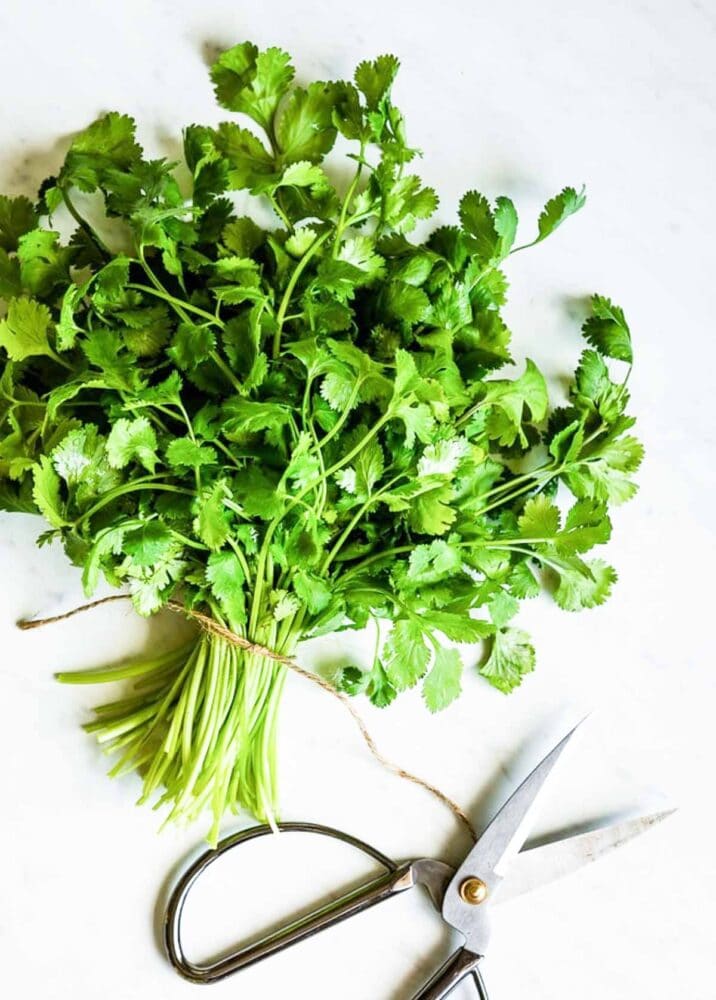
5 Tips When Making Cilantro Pesto
- Use the cilantro stems. You can eat the stems of cilantro. The stems and leaves have a slightly different flavor – the leaves are a little milder tasting. Most leafy herb stems are too strongly flavored, but cilantro stems are tender and easily chop or blend into the pesto. Plus, who wants to spend all that time picking the leaves off the stems?
- Roughly chop garlic, chiles, and nuts first. Chopping the garlic, chiles, and nuts first – either in the food processor, in the blender, or by hand, prevents large chunks of garlic. You can do this by turning on the empty food processor (or blender) and dropping the garlic in through the feed hole, followed by the chiles and nuts.
- Use fresh squeezed lime juice. Bottled citrus juices have a flat flavor. Whenever possible, use fresh-squeezed lime or lemon juice. Not only does it taste better, but you’ll reap the nutritional benefits of fresh juice too.
- Use the right type of oil. Most oils have some kind of flavor, especially the unrefined or virgin varieties. A grassy, green extra virgin olive oil will have a slightly bitter flavor that could take over the cilantro pesto. I suggest using a lighter flavored or neutral-flavored oil so the other flavors shine through. That being said, you can also use nut oils to add in some extra flavor.
- Add extra flavor boosters. If you have access to fresh kaffir lime leaves, add a few to this pesto – you won’t be sorry! But for those of us who are unable to find fresh kaffir lime leaves, fresh lime zest is a good stand-in. Lots of vibrant lime flavor is contained in that zest!

Serving Suggestions
There are so many ways to use cilantro pesto! Try using it as a spread on black bean burgers, as a plant-based pizza sauce, drizzled or dolloped over roasted Brussels sprouts, or a tofu breakfast bowl. Or use as a dip for fresh veggies.
More pesto recipes
If spicy isn’t your thing, yet you love a good plant-based pesto, I’ve got some other recipes for you to try:
Who knew this sauce could be so versatile?! Seriously though, if you can’t use a certain kind of nut or seed mentioned in these recipes, mix + match until you find a winning combo for your dish.
And don’t forget to leave a rating + review on this recipe once you’ve tried it! I’d love to know if this cilantro pesto was a winner for you.
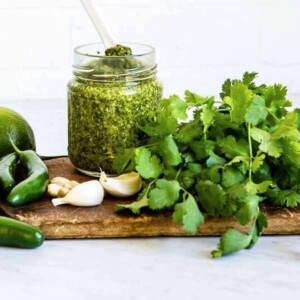
Cilantro Pesto Recipe
Ingredients
- ¼ cup raw cashews raw
- 2 garlic clove peeled and halved
- 1 serrano chile seeds and ribs removed, if desired
- 2 limes juiced
- 3 bunch fresh cilantro leaves and tender stems, about 5 cups loosely packed
- ½ cup extra-virgin olive oil
- sea salt, unrefined to taste
Instructions
- Place cashews, garlic cloves, and serrano chile into the bowl of a food processor fitted with the chopping blade. Pulse until finely chopped.
- Add cilantro and lime zest to the food processor. Pulse a few times to combine.
- With motor running, add lime juice and oil through the feed hole. Stop and scrape down sides as needed. Once pesto is the consistency of a slightly chunky paste, stop the food processor and add a good pinch of sea salt. Pulse a few times. Taste and add a little more salt, if needed.
- Transfer to a jar with a tight-fitting lid. Store in the refrigerator for up to 1 week. Can also be frozen for up to 2 months.
Helpful Tools
Notes
- Not a fan of cilantro? Try swapping it out for a combination of mint and basil instead. Or use parsley.
- Other nuts can be substituted for the cashews. Two or three Brazil nuts or 1/4 cup macadamia nuts will best mimic the flavor and creamy texture of the cashews, but other tree nuts will also work.




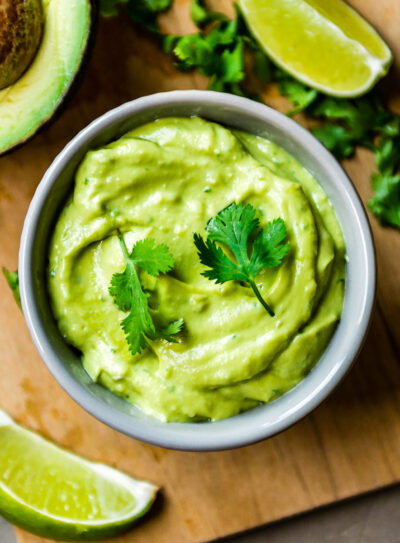
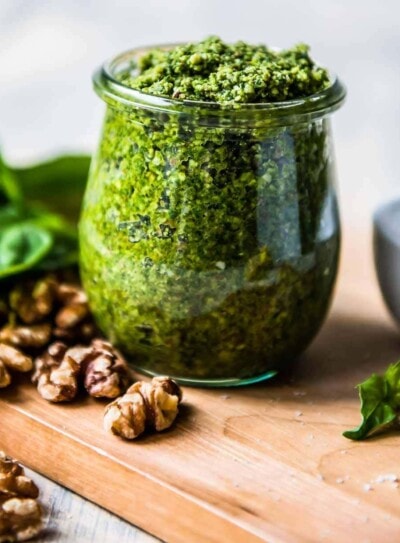
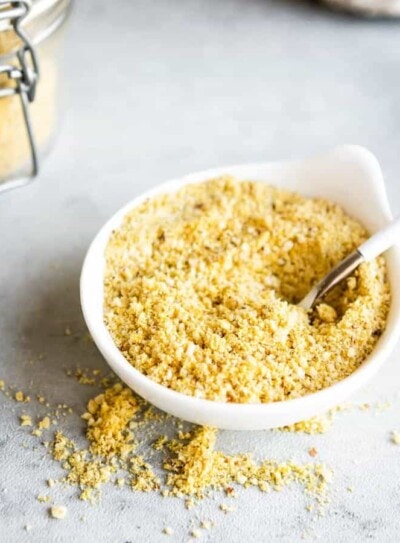










I love cilantro and had some to use. Loved the bright color and taste!
I’m not the biggest cilantro fan, yet I love spice. I can’t wait to add this to tacos!
I love spice, too! I was thinking this would be great on street taco-style tacos.